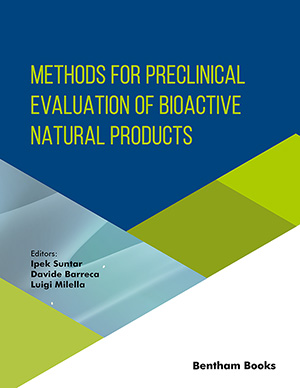Abstract
In recent years, microparticulate systems have drawn growing attention as a viable strategy for delivering cells, proteins, and medications to target areas. The Nanoparticles-in-Microparticles System (NiMS) is a drug delivery method that combines nano- and microparticles to deliver medications or genes to particular bodily regions with precision. A promising method for achieving dual or multiple functions inside a formulation is the development of nanoparticle-in-microparticle systems (NiMS). NiMS comprises a microparticle (M.P.) matrix and one or more nanoparticles (N.P.s). The N.P.s can be designed to provide specific functionality, such as targeted drug delivery or imaging, while the M.P. matrix can be tailored to provide sustained release or protect the N.P.s from degradation. NiMS offer several advantages over traditional formulations, including the ability to control release profiles and achieve site-specific delivery. By combining different types of N.P.s and M.P.s, it is possible to create formulations that release drugs at different rates or with different kinetics, allowing for tailored treatment regimens. Additionally, by lowering off-target effects and boosting efficacy, the site-specific targeting offered by NiMS can enhance the therapeutic index of medications. Microparticles are small, micron-sized particles that can be loaded with therapeutic agents and designed to deliver them to specific tissues in the body. The pharmaceutical sector is developing microparticulate delivery systems for oral, pulmonary, and cutaneous administration. For instance, a promising strategy for treating respiratory conditions, including asthma and chronic obstructive pulmonary disease, is the development of inhalable microparticles (COPD). Moreover, the use of microparticles for topical drug delivery is being studied, where they can be formulated into creams, gels, or patches for treating skin disorders. The composition of microparticles is crucial for successful tissue regeneration because the particles must be biocompatible and able to interact with the cells in the targeted tissue. In addition, the size and shape of the particles can affect their behavior and how they interact with cells. Chemical and biological sensors and devices, optical detectors, electronic components, and nanoscale production depend on nanostructures because they offer unique properties, such as increased surface area and enhanced reactivity, which can be exploited to create more efficient and effective devices.
Keywords: Trojan microparticles, nanoparticles, nanocarriers, pharmaceutical applications, microparticulates system, sustained release, target drug delivery system.
[http://dx.doi.org/10.1016/j.ijsu.2005.10.007] [PMID: 17462292]
[http://dx.doi.org/10.2147/IJN.S17900] [PMID: 21720502]
[PMID: 2073688]
[http://dx.doi.org/10.1016/j.ijpharm.2006.06.025] [PMID: 16872767]
[http://dx.doi.org/10.1073/pnas.182233999] [PMID: 12200546]
[http://dx.doi.org/10.1016/S0168-3659(01)00486-2] [PMID: 11772445]
[http://dx.doi.org/10.1007/s11095-004-9003-5] [PMID: 15771224]
[http://dx.doi.org/10.1016/S0039-6257(05)80069-4] [PMID: 7660308]
[http://dx.doi.org/10.1016/j.ejpb.2012.10.016] [PMID: 23153669]
[http://dx.doi.org/10.1186/1556-276X-9-229] [PMID: 24910577]
[http://dx.doi.org/10.1248/cpb.57.1045] [PMID: 19801856]
[http://dx.doi.org/10.1016/j.biomaterials.2009.08.005] [PMID: 19695700]
[http://dx.doi.org/10.1007/s11051-012-0934-1]
[http://dx.doi.org/10.1002/(SICI)1097-]
[http://dx.doi.org/10.1016/j.jconrel.2004.08.010] [PMID: 15491807]
[http://dx.doi.org/10.1016/S1359-6446(03)02903-9] [PMID: 14678737]
[http://dx.doi.org/10.1016/j.nano.2005.12.003] [PMID: 17292111]
[PMID: 10994037]
[PMID: 23675094]
[http://dx.doi.org/10.1016/j.ejps.2004.09.011] [PMID: 15626579]
[http://dx.doi.org/10.1211/0022357021778448] [PMID: 11902796]
[http://dx.doi.org/10.1081/DDC-100102197] [PMID: 10194602]
[http://dx.doi.org/10.1007/BF02931982]
[http://dx.doi.org/10.1016/0378-5173(92)90055-7]
[http://dx.doi.org/10.1016/S0378-5173(02)00058-3] [PMID: 11996812]
[http://dx.doi.org/10.1016/j.powtec.2005.08.024]
[http://dx.doi.org/10.1016/S0065-2660(10)69015-3] [PMID: 20807606]
[http://dx.doi.org/10.1039/b917112f] [PMID: 20589267]
[http://dx.doi.org/10.1007/s11095-012-0897-z] [PMID: 23135815]
[http://dx.doi.org/10.3748/wjg.v16.i8.1008] [PMID: 20180242]
[http://dx.doi.org/10.1016/j.jconrel.2012.07.026] [PMID: 22841795]
[http://dx.doi.org/10.3109/10717544.2013.848495] [PMID: 24215110]
[http://dx.doi.org/10.1016/j.actbio.2009.04.032] [PMID: 19463980]
[http://dx.doi.org/10.1016/j.ijpharm.2007.05.066] [PMID: 17643878]
[http://dx.doi.org/10.1016/j.nano.2004.12.001] [PMID: 17292062]
[http://dx.doi.org/10.1016/j.jconrel.2008.02.008] [PMID: 18374442]
[http://dx.doi.org/10.1016/j.ijpharm.2007.03.035] [PMID: 17467934]
[http://dx.doi.org/10.1208/s12248-010-9229-6] [PMID: 20878294]
[http://dx.doi.org/10.1016/j.carbpol.2011.03.022]
[http://dx.doi.org/10.1021/bm061131g] [PMID: 17585804]
[http://dx.doi.org/10.1016/j.carbpol.2010.09.055]
[http://dx.doi.org/10.1208/s12249-007-9021-9] [PMID: 18446494]
[http://dx.doi.org/10.1021/la0513306] [PMID: 16207049]
[http://dx.doi.org/10.1021/jacs.9b04272] [PMID: 31317744]
[http://dx.doi.org/10.2174/1872210514666200508121050] [PMID: 32384043]
[http://dx.doi.org/10.1016/j.coph.2006.06.001] [PMID: 16839816]
[http://dx.doi.org/10.1016/j.addr.2012.11.007] [PMID: 23369828]






























